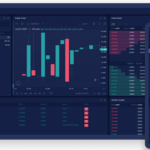Latest McKinsey tech outlook identifies 14 key trends for business leaders

Understanding the Report: An Overview
McKinsey’s annual tech outlook is always eagerly awaited for its forecasts and insights in the world of technology. Anyone who wants to stay competitive in today’s fast-paced business environment needs to understand not just the current digital landscape, but where it’s heading. This year’s report has identified 14 key trends that every business leader should know. The trends broadly cover some of the most influential areas including AI (Artificial Intelligence) and ML (Machine Learning), Cloud and Tech-Enabled Ecosystems, among others. Impacting various sectors, these trends are set to shape businesses, their strategies, and the overall tech market. Considering this, it becomes crucial to delve deep into each of these trends and analyze how different sectors can leverage them. Let me guide you through each of the trends so you have a clear understanding of the potential implications on your business model or strategy. One such trend covered in the report is ‘Multimodal Interactions’. This is a term used to describe the shift away from traditional point-and-click interfaces towards those that involve voice, gesture, gaze, etc.
- AI-driven assistants like Amazon’s Alexa and Apple’s Siri are prime instances of Multimodal Interactions
- This technology offers significant opportunities in terms of accessibility for differently-abled people
- It also revolutionizes user experience, making it more immersive and real
- Businesses will need to rethink their user interfaces to stay relevant
- Investments in research and development for these interactions could be fruitful
- Potential partnerships with platform providers could offer new methods for engagement
Gleaning Insights from AI and Machine Learning
Without a doubt, Artificial Intelligence (AI) and Machine Learning (ML) form a significant part of today’s technology outlook. These are not just trends, but emerging realities that have the potential to transform business operations across various sectors. AI and ML can automate repetitive tasks, provide customer insights, improve decision making and even detect frauds. Thus, adopting these technologies is no longer a luxury, it’s a necessity. But, to truly gain advantage from AI and ML, it’s critical to understand them in detail and align them with your business objectives. A classic instance of AI and ML implementation is when Google used it to reduce energy consumption in their data centers by 40%. This process involved feeding the ML algorithm with different variables such as air pressure, temperature, etc., and using AI to predict the cooling needs in advance.
- Explore possibilities of using AI and ML for your specific industry and needs
- Consider forming a dedicated team or hiring specialists who understand AI and ML
- Create personalized experiences for customers using AI-driven insights
- Use ML algorithms for predicting future trends and proactive decision-making
- Implement AI for automating mundane tasks, freeing up time for innovation
- Always staying updated about advancements in this field will provide competitive edge
The Rise of Cloud and Tech-Enabled Ecosystems
Cloud technology and tech-enabled ecosystems have seen a dramatic rise over the years. They offer businesses unparalleled flexibility- ranging from storage solutions to remote working opportunities. As we move forward, these trends continue to evolve and become more sophisticated. In addition to hosting services on the cloud, businesses need to explore the potential of collaborating and innovating within tech-enabled ecosystems. These ecosystems can foster synergy between disparate systems, eventually leading to enhanced efficiency and more comprehensive solutions. For instance, we can consider how Spotify navigates the tech-ecosystem by leveraging cloud-based infrastructure. It uses Google’s Cloud Storage for data backups, Cloud Bigtable for storing user tastes and preferences, and Compute Engine for running heavy workflows.
- Assess your business needs to decide the level of cloud adoption
- Work towards integrating your systems within a tech-enabled ecosystem
- Become aware of the costs, risks and governance related regulations around cloud usage
- Consider partnerships with cloud providers for customized solutions
- Align your IT infrastructure management plan with cloud strategies
- Train your workforce adequately to leverage these technologies effectively
This summary table presents an intuitionistic view on how the three trends – (1) Multimodal Interactions, (2) AI and Machine Learning, and (3) The Rise of Cloud Infrastructure correlate with potential action points.
Summary Table
| Trends | Potential Action Points |
|---|---|
| Multimodal Interactions | Investments in R&D, rethinking user interfaces, potential partnerships |
| AI and Machine Learning | Exploration of use-cases, forming dedicated team, staying updated |
| The Rise of Cloud Tech | Evaluate what level of cloud adoption you need, integration within tech ecosystem, training workforce |
For the remaining trends, please subscribe to our newsletter where we dive deep into each of the trends identified by McKinsey’s tech outlook report. Knowing these trends is only the first step – acting on this knowledge to drive positive change is what will set you apart.







